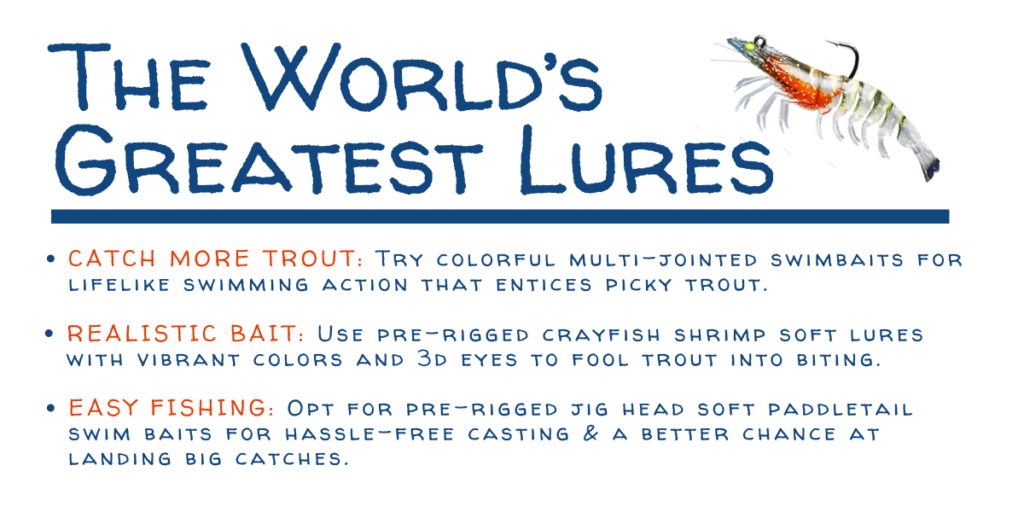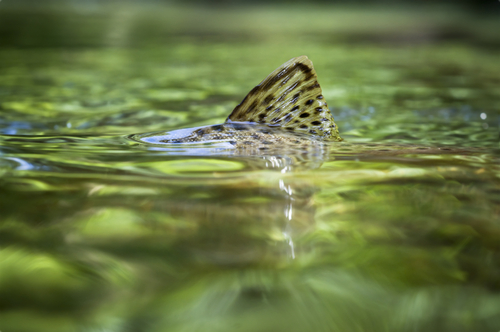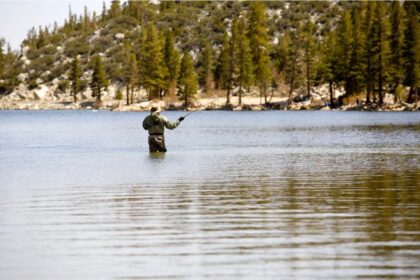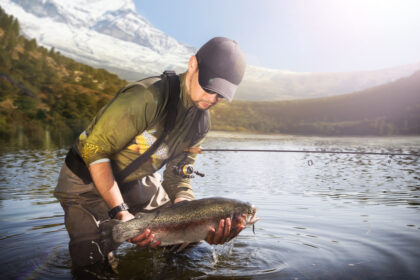Trout fishing is a thrilling experience. It’s a challenge to locate and catch the elusive ‘big one’, and it’s an opportunity to experience the beauty of nature. Our guide will provide beginners with tips to increase their chances of landing the big one! Along with some safety tips to keep in mind. From the right gear to the best bait, this guide will cover most everything you need to ensure a successful trout fishing experience. With these five tips on trout fishing, you’ll be able to create your own trout fishing success story. So, let’s get started!
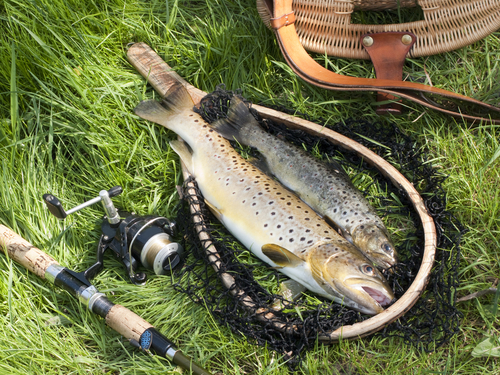
Essential Gear for Trout Fishing
Trout fishing is a rewarding experience and requires some specialized equipment to make it successful. The most important piece of equipment you will need is a fishing rod and reel. You will also want waders or staffs for ease in maneuvering to the best locations while river fishing. Adding a fishing vest with pockets for various tackle and a landing net for safely removing the landed trout from your line is also recommended. Fly boxes and lures to help attract the fish, forceps or pliers and nippers for cutting line when necessary, and hats and sunglasses to protect against sun glare while casting will needed as well. Also consider bringing along a creel to store your catch.
The Best Bait for Trout Fishing
Bait fishing is still a popular, tried and true method. Either near the bottom or suspended from a float. Natural baits such as night-crawlers, salmon eggs, mealworms, and locally available food sources can be very effective. Trout are more likely to bite natural baits or good imitations. Store-bought trout bait is also available, boasting an excellent scent that appeals to trout’s olfactory senses. Different types of bait offer different techniques. Egg or egg sacs can be drifted downstream. Garlic-scented marshmallows can hover over weedy pond bottoms. Minnow-shaped baits threaded on jig hooks can be swum through darker pools. With the wide range of choices, you will be sure to find a bait that works best for you.
Caution on bait fishing
Keep in mind that trout may swallow the bait deeply, and while trying to unhook them or cutting the leader, they may not survive. Because of this, some bodies of water prohibit fishing with bait, especially when catch-and-release fishing is encouraged. If you’re allowed to fish with bait for trout, it’s best done if you plan to keep your catch. Otherwise, opting for artificial lures or flies are good alternatives that ensure the fish will be released unharmed.

Choosing the Right Location
When trying to figure out where to find trout, it’s important to do your research. Look for areas with plenty of cover such as weedy portions of a river or lake, or streams with plenty of structure like logs or rocks. Shallow riffles where the water is cold and clear with a good oxygen level is also ideal. Also look for places that trout are known to gather, like the mouths of creeks, in deep pools of water, or below dams. Knowing where the fish are and what time of day they’re most active can help you choose the right spot!
Understanding Trout Habits and Behaviors
Trout fishing can be a rewarding experience, but success doesn’t always come easy. To increase your chances of success, take time to understand how trout behavior is influenced by the environment they inhabit. Look for cover that trout use for protection from predators. Also check out flow patterns to plan your angling efforts accordingly. In streams, focus on areas with reduced velocity such as feeder creeks or deep pools . Doing this will increase your chance of catching these elusive fish. Remember that trout are sight feeders and although visibility may be diminished due to sediment in the water, dark fly patterns and lures with fluorescent colors can attract strikes more easily. Understanding the reproductive cycle of the specific species you’re fishing for can also be helpful. Changes in color, body shape and other features such as elongated jaws can provide clues about spawning time.
Proper Trout Fishing Techniques
There are many techniques to try in order to help you land some nice specimens. Three easy ways to fish for trout in lakes are:
- Suspend a bait such as a piece of worm or PowerBait under a bobber. Attach a weight just above the hook so it sinks and add a bobber 1½ to 3 feet from the hook.
- Fishing the bottom using weighted bait. Cast out with no bobber but ensure your lead weight remains about 1½ feet above your baited hook for best results.
- Retrieve a spinner, spoon or fly. When retrieving your spinner or spoon cast in trout-habitat-like waters, vary both sink time and retrieval speed until you find a winning combination that entices those trout!
Water and Trout Fishing Techniques
Trout fishing tips on moving waters requires a different strategy than fishing in still water. When casting a spinner or spoon, cast slightly upriver and reel in any slack line while allowing the current to carry the lure downriver. Allow some line to remain off the water to achieve a natural drift. When retrieving, start with a moderate speed, then adjust as needed. Additionally, when drifting with bait in slower-moving waters, use enough weight to reach within a few inches of the bottom and consider using a bobber for keeping track of where the bait is going.
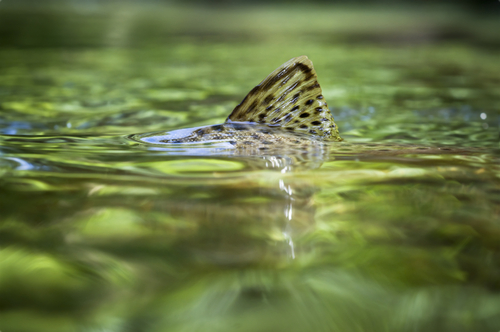
Safety Equipment for Trout Fishing
- Wear a life jacket. A life jacket should be worn when fishing for trout, even if you are an experienced angler. A strong current or unexpected wave can easily capsize your boat and leave you stranded in the water. It’s always better to be safe than to risk swimming back to shore without this very important piece of safety gear.
- Bring communication devices along. In case of emergency, having a reliable source of communication is more than likely the most important item for any outdoorsmen who plans on casting their lines with hopes of reeling in a big one! Ensure that there are adequate cell phone towers present in order for cellular phones to have reception. Be sure those cell phones, radios, and walkie-talkies are charged up and ready before departing from shore!
Safety Tips on Trout Fishing
- Stay on shore when weather gets rough. Trout fishing can be dangerous in bad weather conditions such as high winds, thunderstorms, or flash flooding. It is best to stay onshore in these types of conditions, as being out on the water can lead to potential fatalities and loss of property.
- Check local laws. Before going out for a day of trout fishing, it is always best to check local fishing laws and regulations to ensure that you’re following all guidelines and staying safe while out on the water. This will also help keep your catch within legal limits so that you don’t have any problems with enforcement officers down the line. Our most important tip for trout fishing, don’t forget your fishing license!
- Educate yourself on hazardous areas. Being familiar with potentially unsafe spots or items located near where you plan on fishing. Looking for rocks and fallen trees. This is essential for safety purposes, as these areas can lead to trouble if not navigated properly. Make sure to take note of these hazardous spots prior to setting forth into new territory for your fishing adventures!
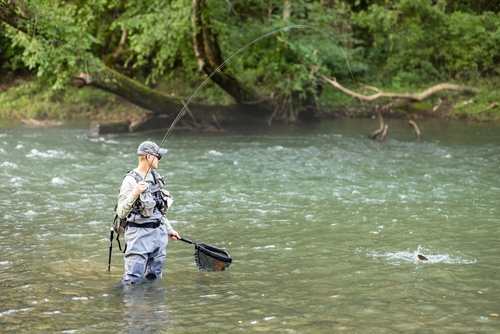
Wrap-up
Whether you’re new to fishing or simply hoping to catch your first trout, you can have a successful trip if you do your research, follow these five tips on trout fishing and always keep safety in mind. From choosing the gear you use and wear, to deciding the right location, catching that first trout can be easy and fun!
